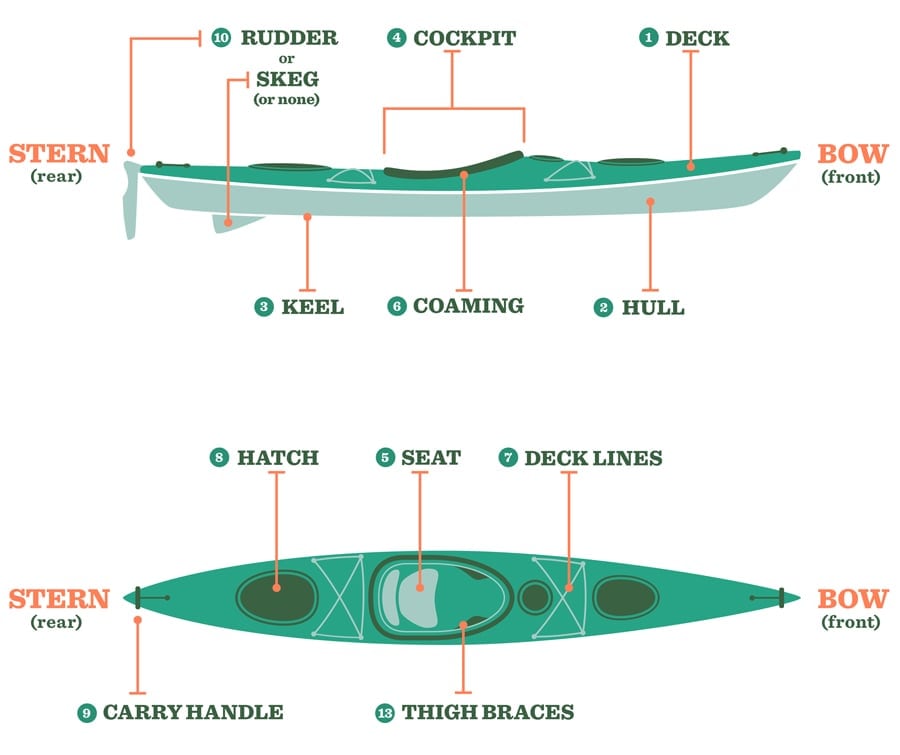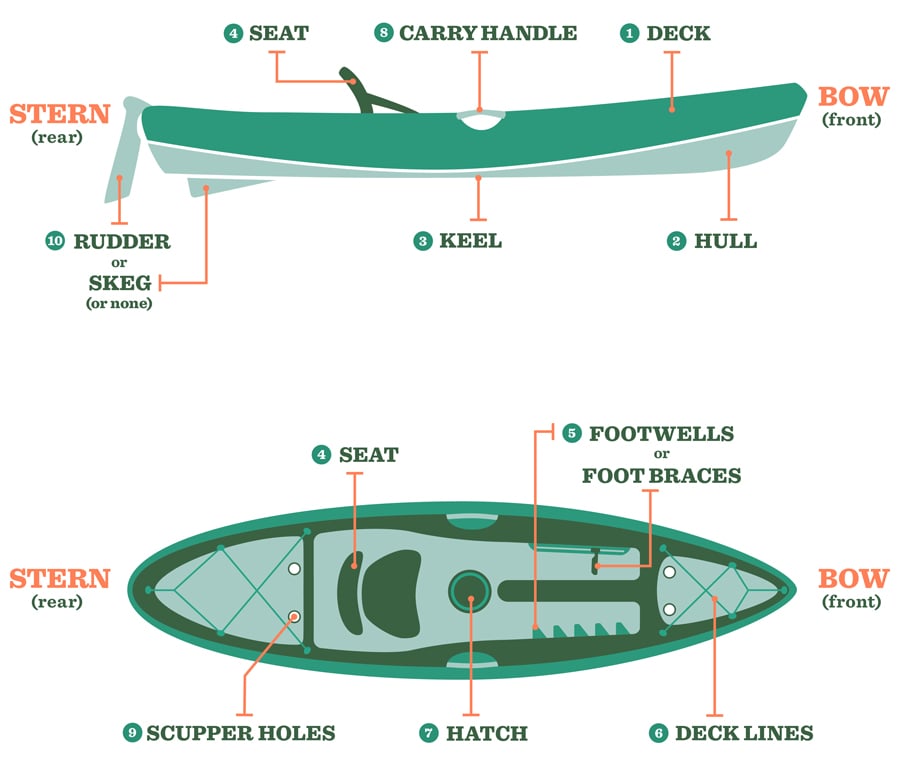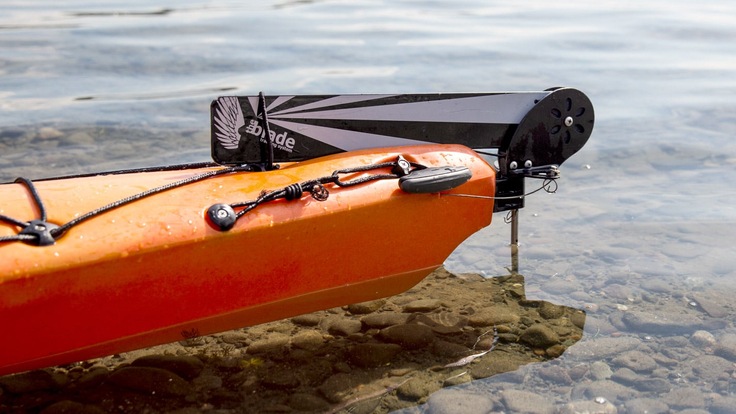The names of many kayak parts are easily understood; others, not so much. Our handy visual guide shows you what's what and what's where.
Getting Oriented to Your Kayak

1. Bow: the part that's pointed where you're headed
2. Stern: the part that's pointed where you were
3. Port: boatspeak for the left side
4. Starboard: boatspeak for the right side
Anatomy of a Sit-in Kayak
(not all boats have all these things)

1. Deck: the topside
2. Hull: the bottom piece
3. Keel: the bow-to-stern ridge on your hull
4. Cockpit: where you get in and command your craft
5. Seat: your base of operations that sits within your cockpit
6. Coaming: boatspeak for the edge of the cockpit
7. Deck line: This can be stretchy (a bungee) or nonstretchy (static)
8. Hatch: your portal to an inner cargo area
9. Carry handles: an easy place to get a grip
10. Rudder or skeg: A skeg is a static drop-down fin and a rudder is an adjustable flip-down fin. Either of these help keep you on track.
11. Bulkhead: a wall inside your boat that keeps water from swamping your cargo space (not pictured)
12. Foot braces: adjustable rests inside the footwell; you control your rudder with these (if your boat has one)
13. Thigh braces: the pads that hug your thighs in the cockpit of a well-fit boat
Anatomy of a Sit-on-Top Kayak
(not all boats have all these things)

1. Deck: the topside
2. Hull: the bottom piece
3. Keel: the bow-to-stern ridge on your hull
4. Seat: your base of operations
5. Foot braces or footwells: foot braces are adjustable while footwells are built into the boat at intervals
6. Deck line: This can be stretchy (a bungee) or nonstretchy (static)
7. Hatch: your portal to an inner cargo area
8. Carry handles: an easy place to get a grip; many sit-on-tops have them in multiple locations.
9. Scupper holes: drain holes for water that sloshes across your deck
10. Rudder or skeg: A skeg is a static drop-down fin and a rudder is an adjustable flip-down fin. Either of these help keep you on track.
